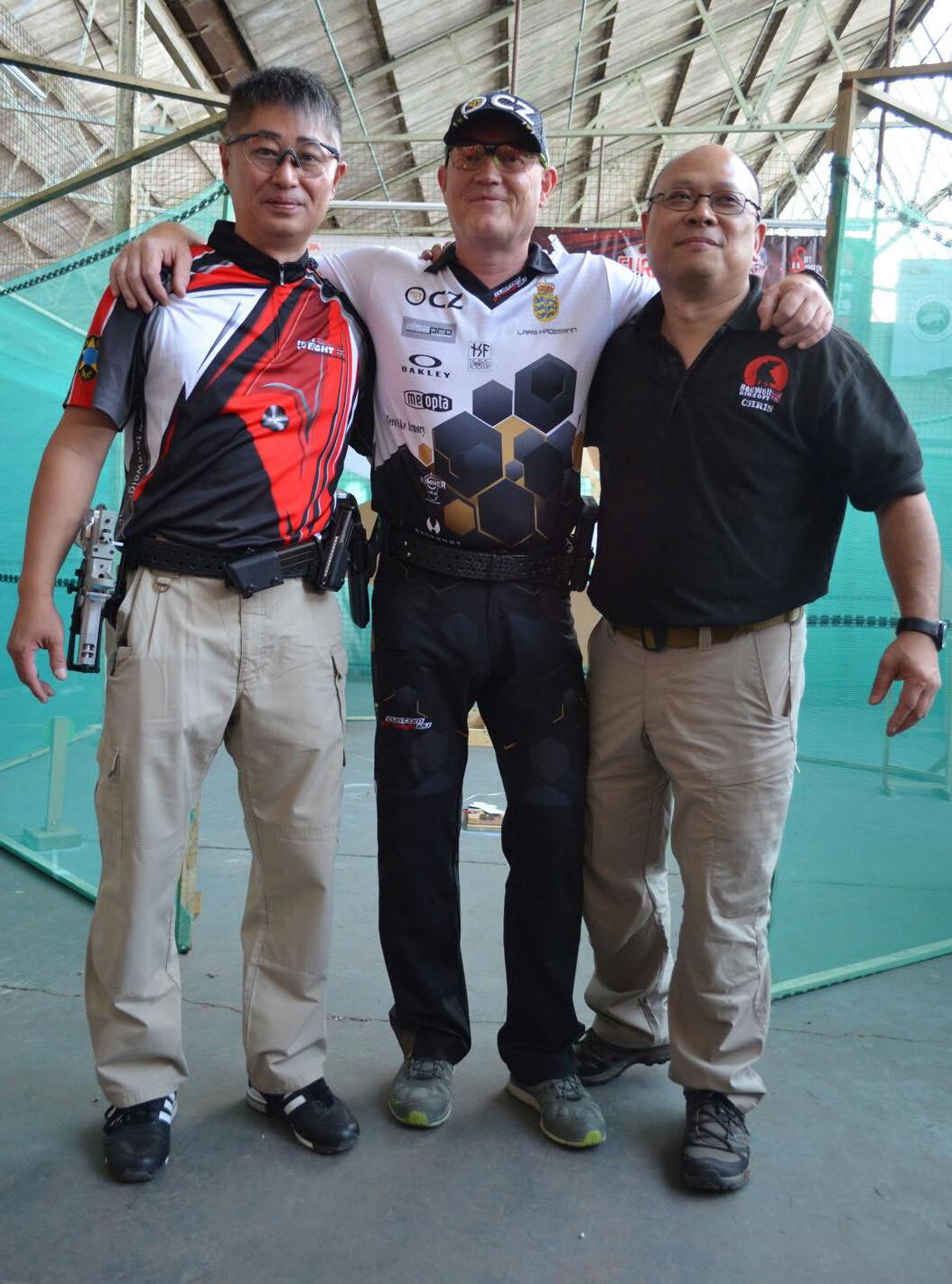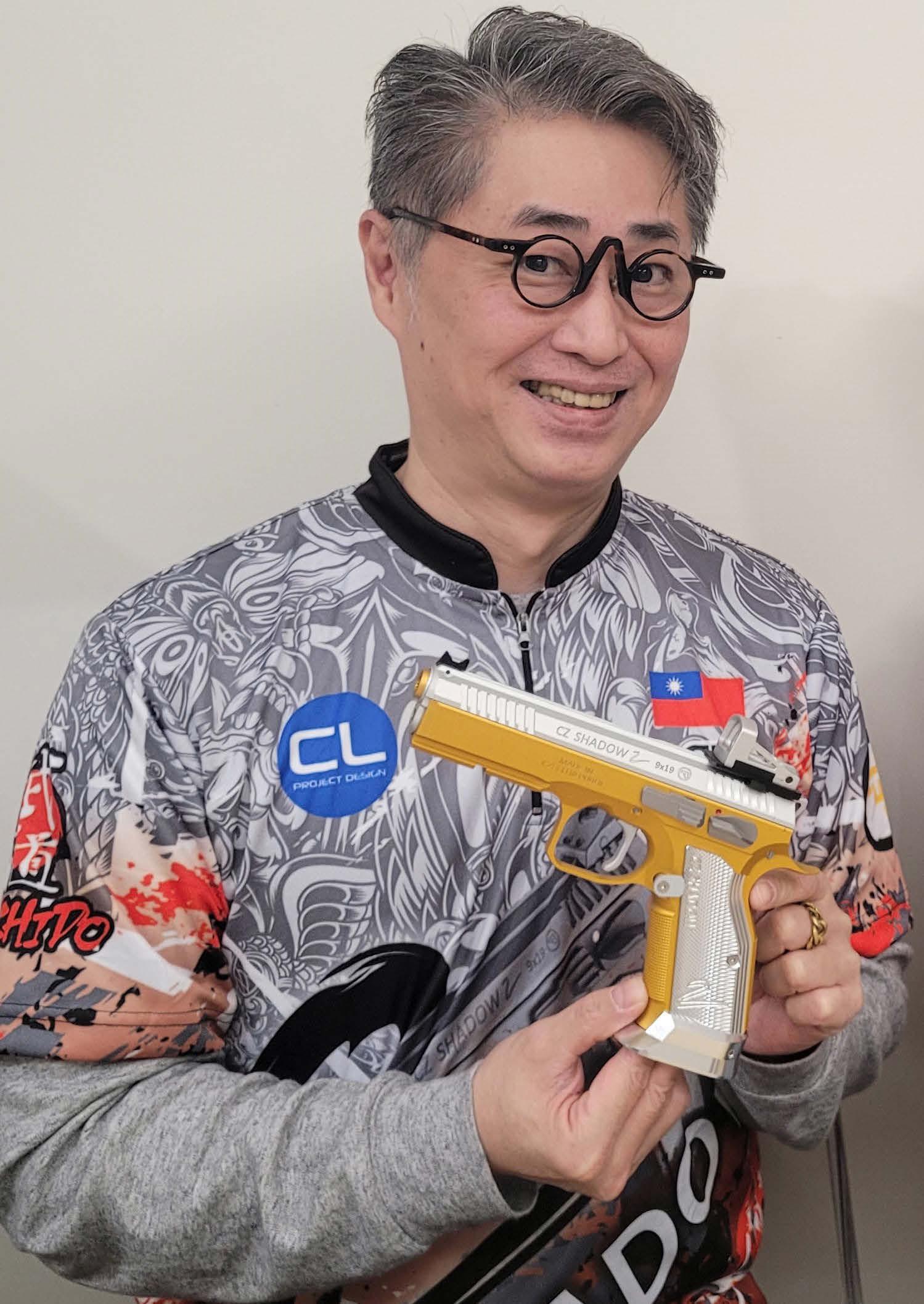
14 minute read
NO WORD OF A LAI!

STEWBACCA HAD ALREADY MET WITH CLARENCE LAI WAY BACK IN 2021 SHORTLY AFTER HE FIRST ARRIVED IN TAIWAN HAVING LEFT HIS NATIVE HONG KONG, AND YOU CAN READ ABOUT HIS NEW ‘CLARENCE LAI PROJECT DESIGN’ (CLPD) EXPLOITS AND PLANS BACK IN ISSUE 130. BUT HOW DID HE COME TO BE ON TAIWAN, WHERE DID IT ALL BEGIN, AND WHAT WAS HIS JOURNEY LIKE TO BECOMING AN OBVIOUSLY INFLUENTIAL FIGURE IN GUNSMITHING AND CUSTOMISING SKIRMISH, COMPETITION AND EVEN REAL GUNS, AS WELL AS THE COMPETITIVE CIRCUIT AND ITS EVENTS AND ORGANISATIONS? STEWBACCA WAS ONCE AGAIN WELCOMED INTO HIS HOME IN THE SOUTH OF TAIPEI TO FIND OUT…
Hi Clarence, thanks so much for sitting down with me again, and I’ll cut straight to the chase; what got you interested in guns/airsoft/ militaria?
CL: Back as early as 7 years old, I remember having a passionate interest in guns, gleefully spending hours watching classic cowboy films and admiring the guns and gunplay involved; from this early age I knew real and replica firearms would always be of great interest to me.
In 1980s Hong Kong functional replica guns were still yet to enter the scene, and only ‘model guns’, those firing 5 or 7mm caps, were available, and during my primary school years I went off to the local model shop with the contents of one of my Chinese New Year “red packets” to avail myself of their services, coming back with my first ever gun purchase, a Colt model 25!
I immediately started enjoying it as well as learning to dismantle and reassemble it, setting myself goals to become ever faster at doing so, and igniting my interest in the inner workings of guns, poring over Japanese airsoft and model gun magazines, learning ever more about the different real guns and growing repertoire of replicas entering the market, cementing my intent to become skilled at working on them.
By around 18 years old I’d become a local yoyo champion and began working for Coca Cola and travelling worldwide for half of the year on promotional tours. However, during the time still spent in Hong Kong you would find me working in the largest local model shop in in the city; as with most countries, airsoft guns tend to make an entry alongside the RC cars, planes and boats and other hobbyist products as they fall into a similar niche. This only fuelled my interest in essentially a library of available gun models being sold there.

I eventually bought myself an early JAC system; for all you puppers in the audience that’s the progenitor to HPA systems with remote tanks and hoses from the very early days of airsoft, what’s old is new again,

“I EVENTUALLY BOUGHT MYSELF AN EARLY JAC SYSTEM; FOR ALL YOU PUPPERS IN THE AUDIENCE THAT’S THE PROGENITOR TO HPA SYSTEMS WITH REMOTE TANKS AND HOSES FROM THE VERY EARLY DAYS OF AIRSOFT, WHAT’S OLD IS NEW AGAIN, EH?”
SMG model which developed a fault so I took it to a specialist shop in Mong Kok who wanted 200 Hong Kong Dollars to repair it for me (a not insubstantial amount of money especially back then!) and even after they did the work on it, it was still unsatisfactory, so in my abject annoyance I decided to dismantle it and experiment with it to further develop my own understanding and as a result I eventually fixed it myself, much to my own satisfaction.
With this initial success buoying me along I decided to offer my services to the model shop to maintain and gunsmith the growing range of airsoft guns they were offering to local customers; as with many manufacturers in Taiwan, the lack of support from Japanese companies for overseas parts or repairs pushed me along to provide that service for those who couldn’t work on their own guns back then.
Initially the shop owner tested my resolve and loyalty (as is somewhat typical in smaller family businesses of the sort) by having me help with deliveries and distribution efforts before finally allowing me loose on the airsoft gun side of the business after three years of service! Of course I immediately began setting to work learning all of the available models and their internals, dismantling and reassembling them and developing an encyclopaedic understanding of myriad models from different manufacturers.

Around this time I also began doing custom work on MGC guns and taking an interest in Combat magazine along with American publications regarding real-steel competition guns; I was drawn in by the early red dot bearing race guns with all their flair and customised features, even having friends post me old VHS videos of competition techniques, after which I began enthusiastically promoting Action Air IPSC locally.
I began training the first Action Air shooters team in Hong Kong (‘Top Gun’) in 1993, with half of the original membership being drawn from my friends garnered in my earlier skirmish efforts from before I focused more completely on competition guns.
In these early days we relied on non-blowback pistol variants without reciprocating slides as result of local restrictions; however in 1995 we could finally make use of the first MGC Glock 17s with realistic slide operation, and the following year I took the first team to Osaka in Japan for the JPSA national championship with 5 Filipinos and 3 Hong Kongers in tow, having done a few dry runs of the competition myself in the year or so leading up to this first team effort.
One of our main stumbling blocks was the Japanese restrictions and use of lower powered ‘duster gas’, refrigerant propellants rather than the more typical ‘green gas’ propane alternatives used everywhere else in the world. Obviously this caused some issues making our own guns work reliably when competing in Japan, but we persevered and I began promoting Action Air overseas into the Philippines, Thailand, Indonesia and of course Taiwan, with the first ‘Airsoft Surgeon Championship’ in 2004, building off my own established personal acclaim as a competitor and gunsmith as well as contacts developed within the growing community.
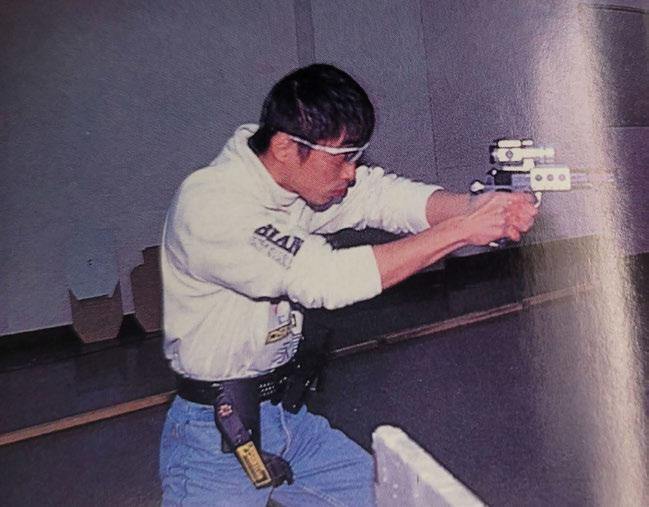
This inaugural event drew in a crowd from local and visiting Taiwanese competitors alike, making use of standardised Western Arms pistols to great effect, and afterwards I continued teaching classes and growing the community of competitive shooters right through until 2007.
Around this era I was also a co-owner of DEN Trinity, one of the leading names for airsoft guns and custom components at the time, named for the last letters of the three owners names: RaymonD, myself ClarenceE and NelsoN. This also became the first online airsoft store in Hong Kong, with others springing up immediately afterwards.
However, I eventually left to focus on promoting my own ‘Airsoft Surgeon’ higher-end custom or bespoke gunsmithing efforts, built on the following I had gained during my work in various other stores beforehand. One model I produced in particular somewhat catapulted me to further fame.
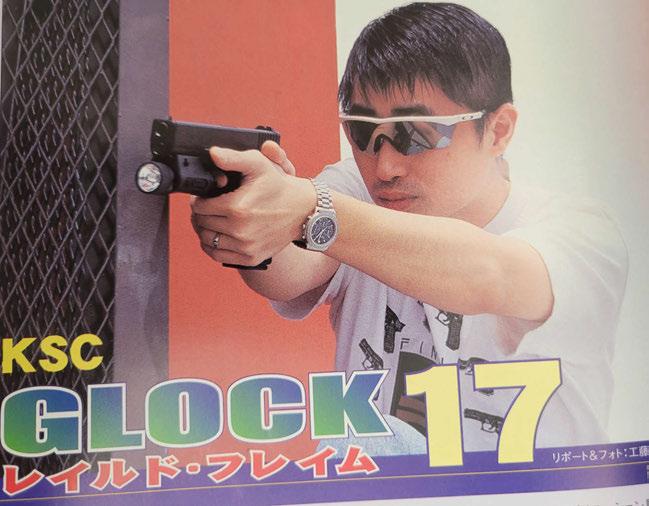
Around this time the Schwarzeneggar action film ‘End of Days’ was making its rounds in the cinemas and proved popular, so I got to work replicating the epic MP5 with underslung grenade launcher which made a memorable appearance in the final
AEG and customising an early launcher onto the lower body.
Surprisingly some of my earliest successes were aimed more towards the more established skirmishing community, with 30 units of my CNCmachined custom Stoner LMG AEGs all selling out locally to avid players who would frequent the verdant hillside game sites long before they began being closed for redevelopment and pushing players indoors to more CQB style games and sites.
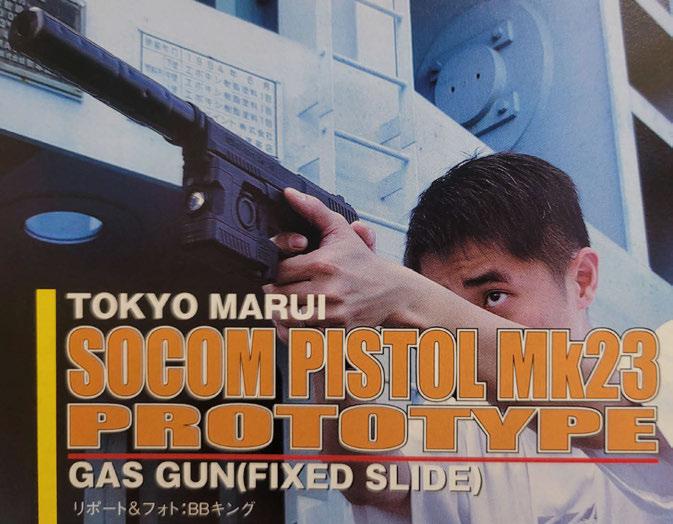
Following this awareness of my efforts grew overseas and I was honoured to become a model for numerous new gun offerings in the very Japanese magazines I’d spent my earlier years enjoying leafing through so avidly, supporting the releases of the Marui Mk23 NBB SOCOM, the Sig Sauer P232 GBB, KSC’s original Glock 17 GBB among others. This was very unusual at the time, with Japanese publications tending to favour local talents to promote products and serve as models.
AA: How do your friends and family react to your involvement?
CL: I became unusually distant and independent from my family from a relatively early age, and thus didn’t have to deal with the typical push-back regarding my hobbies and life choices, although this in itself made things more challenging as I also didn’t get the typical structure and guidance most Asian teenagers would.

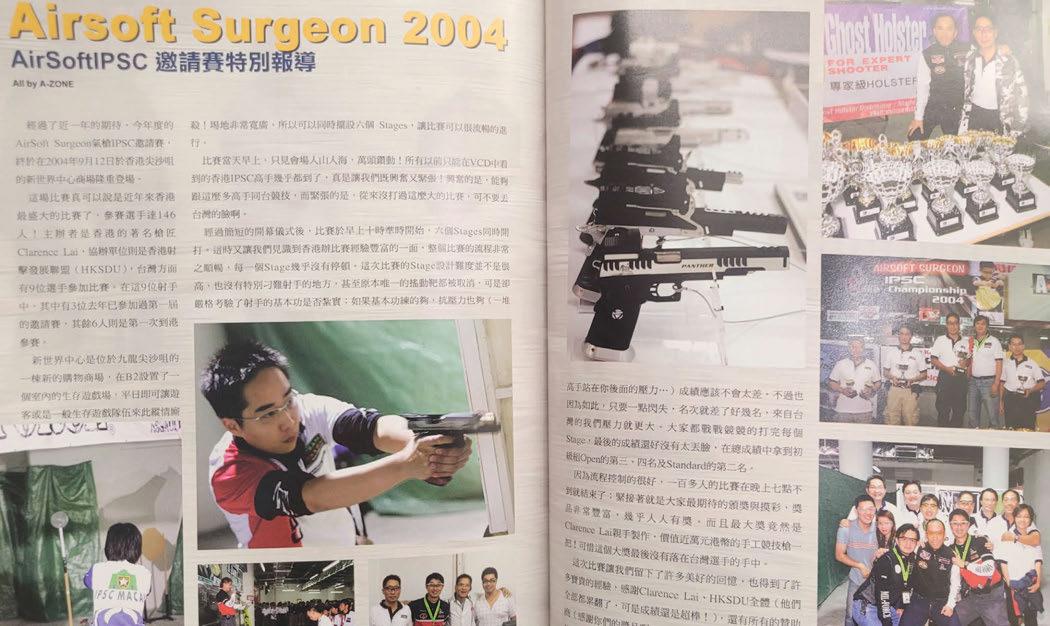
As a result I genuinely had to carve my own path and deal with my own choices and consequences, and learned a lot about myself and life in general in the process, developing a respect for all facets and learning to treat everyone with the same care and attention regardless of social status, while also accumulating all of the knowledge that would direct me in my later gunsmithing efforts through a great deal of personal expense and destructive testing of an array of guns from various manufacturers. (Editor’s note - this financial ruin all sounds familiar…a man after my own heart!)
AA: Have you encountered any difficulties working in the industry?
CL: From early on I realised the paradigm of just imitating others and making derivative works based off the efforts of the established industry leaders will never drive innovation or hold people’s interest in the longer term. As a result I decided to take a more difficult but rewarding approach similar to the fashion industry; making fewer but more boutique high value custom guns for more discerning clients with higher demands of form and function… of course focusing on the flair and individuality of competitive shooters in particular.

AA: Why do you do what you do; what do you enjoy most about it and what motivates you?
CL: My own personal experiences and malaise with the market and its capabilities early on spurred me on to develop a more appealing personal ethos; build something of quality that won’t disappoint the end user, satisfy the niches and needs of those who can’t find products that do so elsewhere on the market, and above all else develop, extensively test and produce components which genuinely drop in without the fettling or modification numerous other offerings typically require. I never want my products to bring people extra work.
Furthermore I want to bring people products that can not only enjoy shooting well to develop their own highest ability, but will also be a talking point or even an extension of their own personality, individuality or ethos, something they can genuinely enjoy functionally and aesthetically as a functional work of art, with the handling and experience being as close to their real firearm counterparts as practicably possible through material choices and extensive development and care to detail.
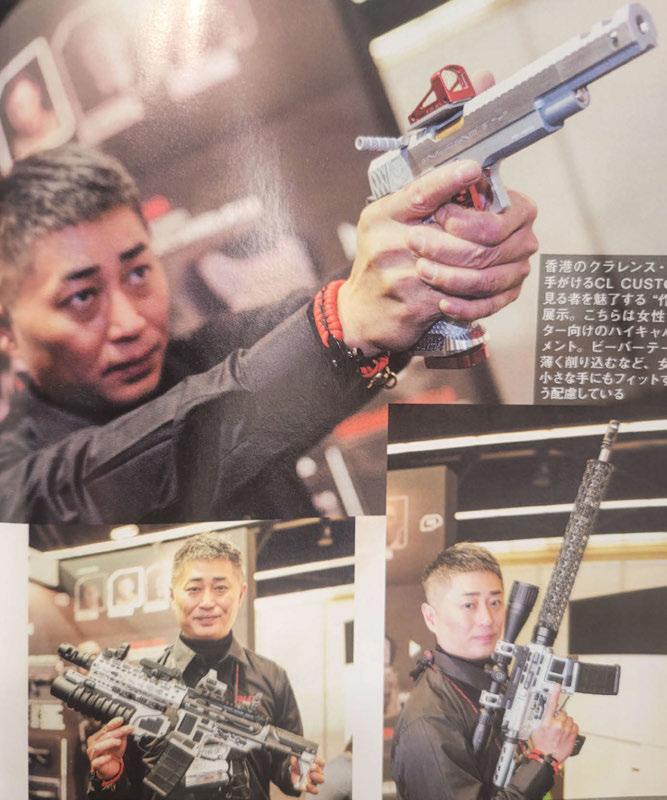
AA: How did you get involved in real steel competitive shooting?
CL: I started by travelling to the Philippines in the early 1990s where I met my master who taught me both real-steel shooting and gunsmithing, the lessons of which were eventually transferred into my airsoft products as well such as the hexagonal cuts becoming somewhat of a signature for my 1911 or revolver product’s aesthetics.

AA: How has the Hong Kong scene changed since you first started out, and how does Taiwan compare since you moved here?
CL: Through my own involvement I somewhat developed the early community and made the environment a product of my own efforts and ideas; previously manufacturers, stockists and enthusiasts had little interest in terms of making ‘not another AR’, and somewhat trailblazed the idea of a premium toy gun market through my own products, with other airsoft gunsmiths and gun customisation services springing up as the community, subculture and demand developed to support them. I spent a lot of my own personal time and money investing in the organisation of events as well as travelling abroad to attend, actively participate in or otherwise promote competition events and the general growth of the international competitive Action Air community and also enable these shooters to progress into real-steel shooting building on their existing skills if they so wish.
Real-steel manufacturers also began taking more of an interest in my products at trade shows due to me being well known, and I made some of the earliest lightweight skeletonised ARs (which started a trend in airsoft) that eventually the real steel manufacturers followed suit with!
A lot of aesthetic notes (porting, trigger geometry etc) were carried over by them into their own designs in the longer term, and I focused on bestowing guns with personalities of their owners or certain related concepts important to them in the design language of the finished results.
AA: What’s your favourite aspect of working within the airsoft community?
CL: The shared passion within the industry; most participants are true gun lovers, so most of them and the manufacturers have a largely shared vision for the future to drive towards, improving the technology, performance, user experience and aesthetics throughout the industry to make a better product and grow a larger and more capable community.

AA: What are your plans or goals for the future?
CL: Once I moved to Taiwan I stopped building the more boutique custom guns due to time constraints and also a desire to be more relaxed and bring new products to the wider market.
As a result CLPD will focus on CZ products in the near term as they have greater appeal and application in the market of wider popularity guns and components at this time, and again were an otherwise unaddressed niche until I began making upgrade components for them.
AA: How do you feel about other shooters or gunsmiths viewing you as a role model?
CL: I’m not convinced people necessarily would; within the industry and practitioners base people always tend to forge their own path or decide on their own preferences, many of them having strong personalities and individuality! I certainly don’t feel that I’m ‘the best’ or ‘the pinnacle’ of my art or capabilities, there’s always someone better out there that you might not know about, but my work and contributions do bring me great pride.

AA: How do you see the sport shooting community growing locally or further afield in the future/ how can people help to progress it?
CL: It can be difficult to enact change in the community at times; depending on the region, many people have established ideas of the disciplines and way things should be run, but hopefully with persistence new ideas can eventually come to the forefront… but it’s usually a long process, especially in Taiwan.
Many thanks as always to Clarence and his lovely wife Katherine (a very competent shooter in her own right!) for their warm hospitality and friendship, as well as supporting my own Action Air efforts in Taiwan as their crash test dummy!
Fellow shooters... Are you ready?...BEEP! AA

